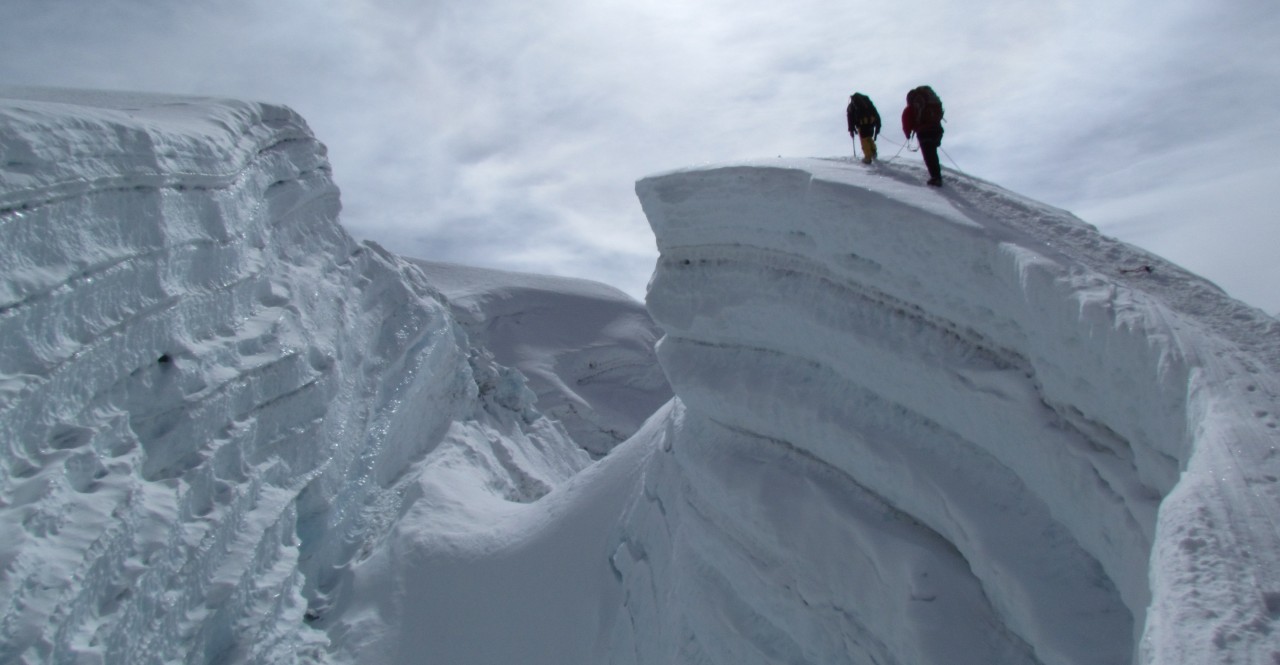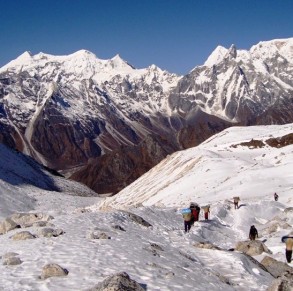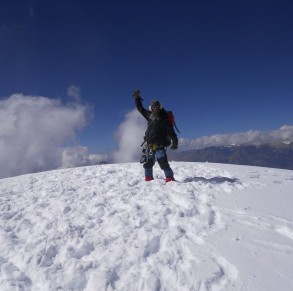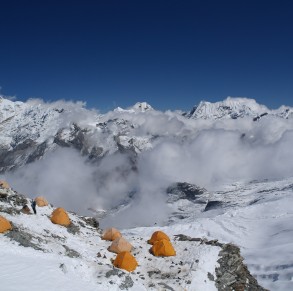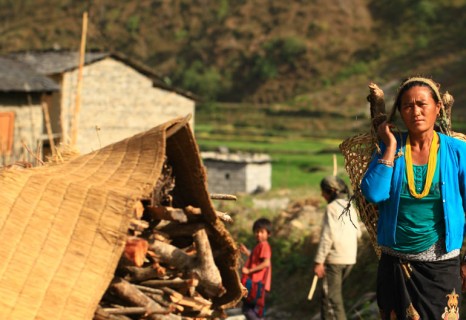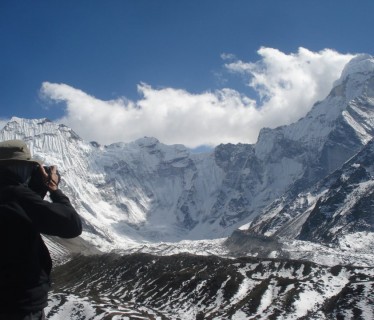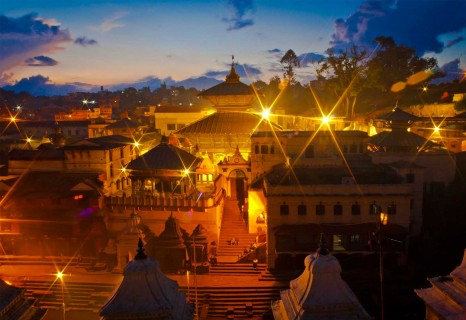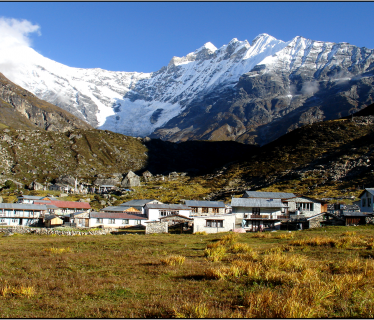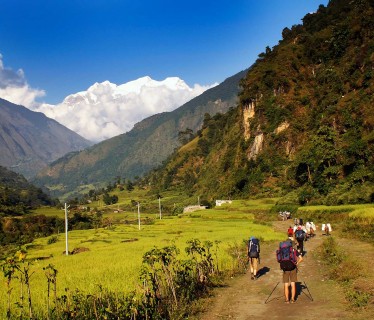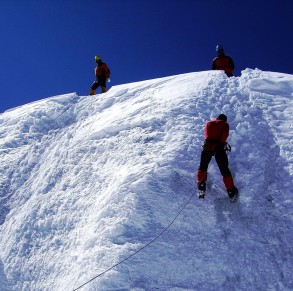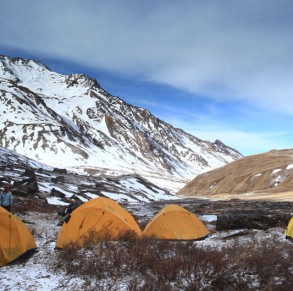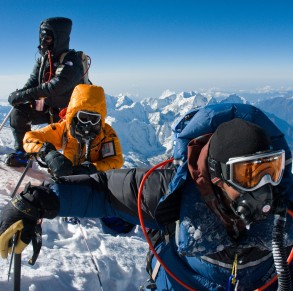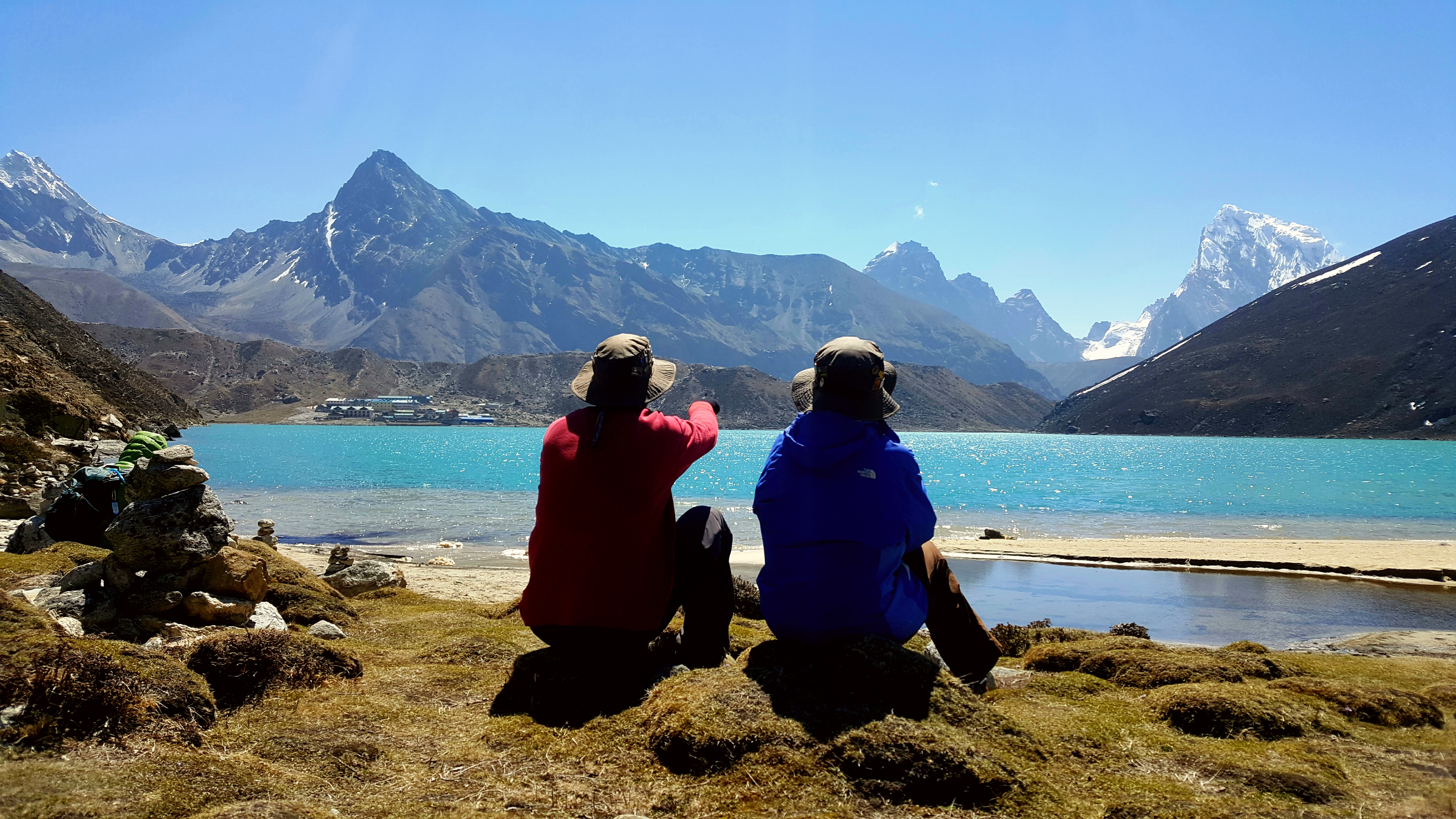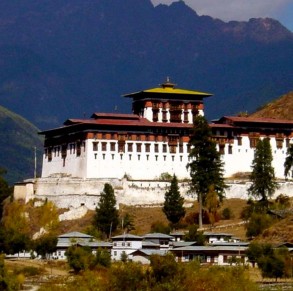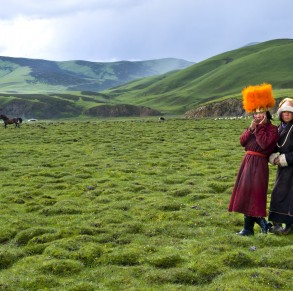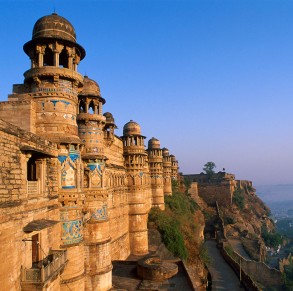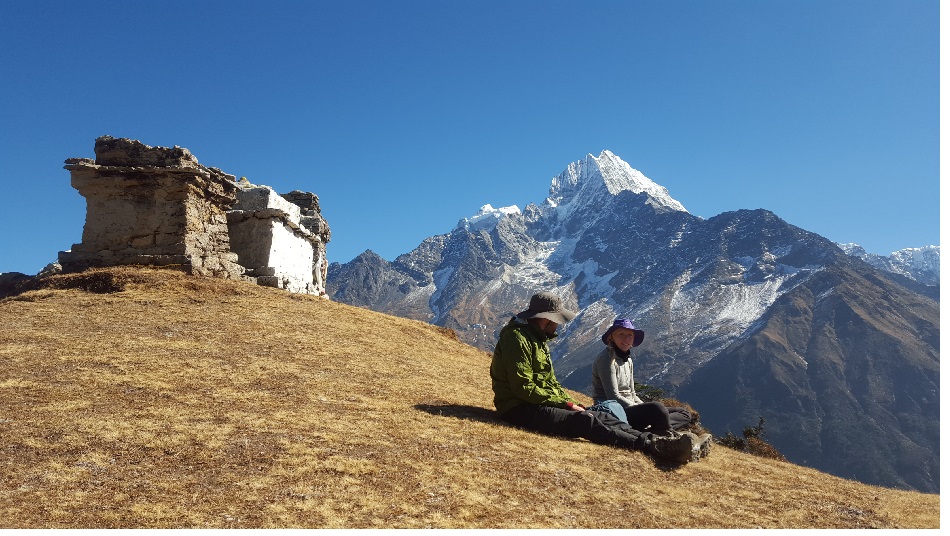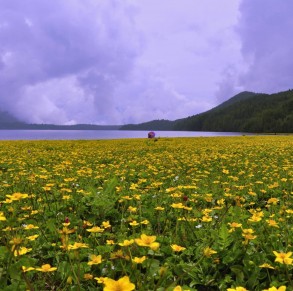Day 01: Arrival Kathmandu (1,350 m/4,428 ft)
Day 02: Fly to Lukla (2,800 m/9,184 ft) then trek to Phakding (2,652 m/8,700 ft): 40 min flight, 3-4 hours trek
Day 03: Phakding to Namche Bazaar (3,440 m/11,283 ft): 5-6 hours
Day 04: Namche Bazaar (3,440 m/11,283 ft): Acclimatization Day
Day 05: Namche Bazaar to Tengboche (3,870 m/12,694 ft) 5- 6 hours
Day 06: Tengboche to Dingboche (4,360 m/14,300 ft): 5 to 6 hours
Day 07: Dingboche to Chhukung (4,730 m/15,518 ft): 3-4 hours
Day 08: Acclimatization: Climb Chhukung Ri (5,546 m) and trek back to Chhukung: 3 – 4 hours
Day 09: Chhukung to Island Peak Base camp (5,200 m/17,060 ft): 3-4 hours
Day 10: Pre-Climb training on Island Peak Base Camp
Day 11: Island Peak Base Camp to Summit and back to Base Camp (5,600 m/18,372 ft) 10-12 hours
Day 12: Island Peak Base Camp to Pangboche (3,985 m/13,074 ft) 5-6 hours
Day 13: Pangboche to Namche Bazaar: 4-5 hours
Day 14: Namche Bazaar to Lukla: 6-7 hours
Day 15: Fly to Kathmandu
Day 16: Final Departure
Day 01: Arrival Kathmandu (1,350 m/4,428 ft)
Upon our arrival at the Tribhuwan International Airport (TIA) in Kathmandu, we will be greeted by a representative from Snow Leopard Trek who will take us to Hotel Shanker or another hotel of a similar category. After checking in, we visit Snow Leopard Trek’s office for trip preparation and also to meet your crew. In the evening there will be a welcome dinner in a traditional Nepali Restaurant where we will be able to enjoy authentic Nepali cuisine with a brief cultural program.Overnight in Kathmandu.
Day 02: Fly to Lukla (2,800 m/9,184 ft) then trek to Phakding (2,652 m/8,700 ft): 40 min flight, 3-4 hours trek
After breakfast, we will be taken to the domestic terminal of TIA for an early morning flight to Lukla. After a flying above the breathtaking green and white mountains, we reach Tenzing-Hillary Airport at Lukla. This is one of the most beautiful air routes in the world culminating in a landing on a hillside surrounded by high mountains. Upon our arrival at Lukla, we meet our other crew members and after some packing and arrangements, we start our trek through the prosperous village of Lukla until we reach Phakding. To assist in acclimatization, we only have a short hike today. However, if interested in additional activities, we can take a side trip to a nearby monastery. Overnight in Phakding.
Day 03: Phakding to Namche Bazaar (3,440 m/11,283 ft): 5-6 hours
After breakfast we walk through beautiful pine forests and then along Dudh Koshi River ending our nature-filled journey at Namche Bazaar. After walking for almost over an hour, we come across the glistening Mt. Thamserku (6,608m) on our right and also experience the serenity of pine, fir and juniper forests throughout our journey. If the weather is clear, we may even catch a glimpse of Mt. Everest peering over the Lhotse-Nuptse ridge. We continue walking until we reach the entrance to Sagarmatha National Park, Namche Bazaar, the gateway to Mt. Everest and main trading centre of this region. This day we cross five suspension bridges, the last one also known as the Hillary Bridge being the highest. It is an uphill walk from Hillary Bridge to Namche Bazaar. Overnight in Namche Bazaar.
Day 04: Namche Bazaar (3,440 m/11,283 ft): Acclimatization Day
This is the day set aside for acclimatization. Health experts recommend that we stay active and move around even during the rest day instead of being idle. There are a few options set aside for this day. We can either stroll around Namche’s quaint villages or come in contact with the Sherpa people and their rich culture, or we can hike up to the Everest View Hotel and enjoy an up-close view of the mighty Everest. While in the Namche village or upon returning from the hike to the Everest View Hotel, trekkers may also visit the local museum containing exhibits displaying the area’s native flora and fauna as well as the history of the Mount Everest region.
For trekkers who want to hike for a little longer, a hike to Khumjung village (5-6 hours) may also be an option. While in the village we can visit the Edmund Hillary School and Khumjung Monastery (a monastery famous for housing the head of the Yeti!). Overnight in Namche Bazaar.
Day 05: Namche Bazaar to Tengboche (3,870 m/12,694 ft) 5- 6 hours
After breakfast, we trek towards Tengboche. It is an easy walk from Namche to Phunki. Upon reaching Phunki, we ascend towards Tengboche, a village that houses the very famous Tengboche monastery which is the largest monastery of the Everest region. Located amidst the Sagarmatha National Park (a UNESCO World Heritage Site of “outstanding universal value”), it is draped with the panoramic 360-degree view of the Himalayas, including Mt. Everest, Nuptse, Lhotse, Ama Dablam and Thamserku and is also the biggest monastery in the Khumbu region. We visit the monastery the same day at around 3 p.m. to witness a religious ceremony. Overnight in Tengboche.
Day 06: Tengboche to Dingboche (4,360 m/14,300 ft): 5 to 6 hours
With the Himalayas as its backdrop, the monastery in Tengboche is in an excellent location. We visit the monastery in the morning and take pictures of the amazing landscape. Then we begin our trek by walking through lush forests of birch, conifers and rhododendrons on an easy path. This picturesque trail then dips down to Debuche, crossing the Imja River before climbing up to Pangboche (We can either walk in the upper or lower Pangboche trails). We are most likely to choose the upper Pangboche trails as it provides more pristine view of the Himalayas. We also visit the Pangboche monastery. From here onwards, the walk is fairly moderate as we enter the Imja Valley. The valley gradually unfolds as we approach the confluence of the Lobuche River. We descend into the river and begin the climb up to Dingboche. On arrival at Dingboche, we are greeted by a beautiful array of fields enclosed by stone walls to protect barley, buckwheat and potatoes from the cold wind and grazing animals. Overnight in Dingboche.
Day 07: Dingboche to Chhukung (4,730 m/15,518 ft): 3-4 hours
Dingboche is a summer settlement and here the great peaks of Ama Dablam, the ridge of Nuptse-Lhotse, Tawache and Chalotse surround us. We begin today’s trek to Chhukung by walking thorough stone walled fields, Imja Khola valley before walking in glacier moraines. On our walk, we will be surrounded by Lhotse and Ama Dablam mountains. Later, beyond Bibre village we see Island Peak soaring above us. The trail ahead is intersected by icy streams. We reach Chhukung, a small settlement in about half an hour from Bibre. From here, directly across the valley is the fantastic Ama Dablam and the Amphu Labsa mountains. Overnight in Chhukung.
Day 08: Acclimatization: Climb Chhukung Ri (5,546m) and trek back to Chhukung: 3 – 4 hours
Today is another day set aside for acclimatization. Climbing Chhukung Ri should help our body adjust to high altitude. Chhukung Ri is a peak located directly above the Chhukung village. The climb to Chhukung Ri involves some easy scrambling near the summit. From the top, we can look directly across the valley for a fantastic view of Ama Dablam and Amphu Labsa peaks. We descend back to Chhukung to spend the night.
Day 09: Chhukung to Island Peak Base camp (5,200 m/17,060 ft): 3-4 hours
The trek to Island Peak Base Camp is on a fairly steep trail. First, we climb south then turn east to the main line of the valley. We then walk on a winding path below the southern flank of the moraine from the Lhotse Glacier. Next, we continue walking on a pleasant trail along a streamside. The route to the Amphu Lapcha lies to the southeast. A crisscross route through the Imja and Lhotse glacier moraines leads to a wide valley flanking the SW side of Island Peak. Overnight at Island Peak Base Camp.
Day 10: Pre-Climb training on Island Peak Base Camp
We begin our pre-climb training today after breakfast. Our guides will provide training on peak climbing techniques and the proper ways of using climbing gears such as the ice axe, climbing boots and crampons, harness, ascender, etc. The training will also include using ropes to go up and down. Although it is not mandatory to have prior training for Island Peak Climbing, we strongly believe that some training experience will boost your confidence and climbing skills to increase the chances of scaling the summit as well as to fully enjoy the experience. We can spend the rest of the day hiking to high camp and back or resting for the next day’s climb. Overnight at the base camp.
Day 11: Island Peak Base Camp to Summit and back to Base Camp (5,600 m/18,372 ft) 10-12 hours
We wake up early today at around 1 to 2 am and have our breakfast before beginning our climb. It is important we reach the summit before noon because in the afternoon the strong winds in the high lands might become a barrier for a successful summit. The trail moves up beyond the base camp for several hundred meters before striking off the steep hillside. Initially sandy, the path soon turns to grass before becoming boulder strewn. As we climb up the hill, we will see that the slope narrows and the trail enters a steep rock channel. We climb the rock gully. This is not difficult but there are several short rock steps to climb before we emerge on the right side of the gully. The route then follows a ridgeline, which leads to an exhilarating and exposed traverse onto the snout of the summit glacier. We need to rope up for the glacier as it contains several crevasses. The guides will fix a rope wherever necessary. A steep snow slope leads us onto the summit ridge. After enjoying the summit views, and taking pictures, we descend all the way to Island Peak Base Camp where some of our crew are waiting for us. We celebrate on our successful Island Peak climb.
Day 12: Island Peak Base Camp to Pangboche (3,985 m/13,074 ft) 5-6 hours
Today’s walk will be a much easier as we descend to the lower altitudes. Following the same route back through the wide valley of Khumbu Khola, we pass through the beautiful Sherpa villages Orsho and Shomare. We can also take a different trail to visit the Gompa in Upper Pangboche, which is believed to be the oldest in the Khumbu region or take the regular trail to reach Pangboche. Pangboche is a scenic village surrounded by Everest to its north, Ama Dablam, Thamserku, and Kangtaiga to the east, the Kongde range to the south and the Imja Tse River flowing through the wide fertile valley.
Day 13: Pangboche to Namche Bazaar: 4-5 hours
From Pangboche we retrace our steps down to the Imja Khola and up through the forest to Tengboche. If interested, we can also visit nuns at the Tengboche monastery. After lunch at Tengboche, we continue through the hillside blanketed by rhododendron and juniper trees. After crossing the bridge over the Dudh Koshi River, our trail follows the Dudh Koshi gorge descending rapidly through the pine forests before reaching Sansa. We keep a lookout for wildlife such as mountain goats, snow leopards, colorful pheasants, etc., while passing through the forest. After passing a chorten, we reach the army camp at Namche Bazaar. Overnight in Namche Bazaar.
Day 14: Namche Bazaar to Lukla: 6-7 hours
The trail descends steeply downward so we need to walk cautiously as our shaky legs continuously battle the rocky terrain. After crossing the suspension bridges over the fast flowing Dudh Koshi and its tributaries, the trail becomes more level and natural. After our arrival in Lukla, we stretch those sore legs and recall the experiences of the last couple of weeks. Overnight in Lukla.
Day 15: Fly to Kathmandu
We catch an early morning flight to Kathmandu after our long mountain journey. After reaching Kathmandu, we can take a rest or do some souvenir shopping. If we want to explore any other areas of Kathmandu, we may do that today. Our guides can help you with both souvenirs shopping or sightseeing. There will be a farewell dinner in the evening to celebrate the climbers’ successful summit of the Island peak. Overnight in Kathmandu.
Day 16: Final Departure
Your adventure in Nepal comes to an end today! There is nothing to do but trade emails with your travel companions and organize your photos. A representative from Himalayan Glacier will take you to the airport, approximately 3 hours before your scheduled flight. On your way home you’ll have plenty of time to plan your next adventure in the wonderful country of Nepal.
Important Note :
Your safety is of paramount concern while traveling with Snow Leopard Trek. Please note that your leader has the authority to amend or cancel any part of the itinerary if it is deemed necessary due to safety concerns. Every effort will be made to keep to the above itinerary; however, since this adventure entails travelling in remote mountainous regions, we cannot guarantee that we will not deviate from it. Weather conditions, health condition of a group member, unexpected natural disasters, etc., can all contribute to changes in the itinerary. The leader will try to ensure that the trip runs according to plan, but please be prepared to be flexible if required.


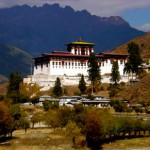
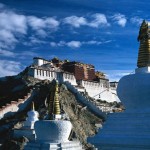
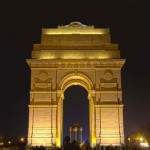

 English
English